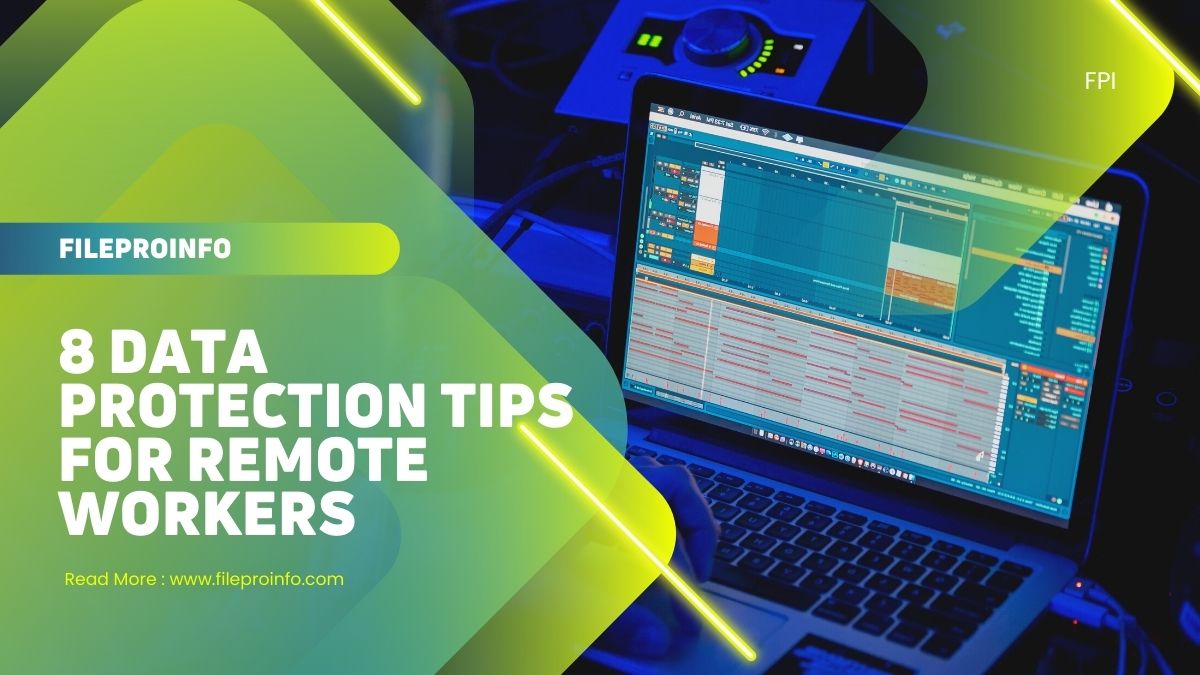
COVID- The global economy has come to a halt as a result of the 19 pandemic outbreak. While most countries are on lockdown, businesses are encouraging their employees to work from home in order to keep operations running. Companies with a weak infrastructure struggled at first to transition to remote work; however, as time passed, companies adjusted and adopted it.
According to a recent Gartner survey of 800 global HR executives, 88 percent of companies encourage or require employees to work from home. In addition, nearly 97 percent of organizations have canceled business-related travel. Furthermore, new applications and tools have made working from home simple and convenient.
However, it is undeniable that working in an office and working from home are two completely different games. In both cases, cybersecurity has become a major concern. Devices and networks in businesses and offices are typically well-protected. Cybercriminals are taking advantage of the current crisis. In less than 24 hours, Microsoft discovered a massive phishing campaign involving 2,300 different web pages attached to messages and disguised as COVID-19 financial compensation information, which led to a bogus Office 365 sign-in page.
Here are eight simple steps to working securely remotely:
1. Set up Wi-Fi encryption
Configuring Wi-Fi encryption is the first and most important step in protecting your computer. This is due to the fact that if the computer is protected but the Wi-Fi is not, the attacker can easily connect to the PC. This allows them to intercept not only everything your PC sends or enters online but also passwords for remote access to an office-based computer. As a result, configuring your network connection is critical.
This can be accomplished by ensuring that the connection is encrypted. This will protect your information from prying eyes. There are, however, several Wi-Fi encryption standards. As a result, you should handpick the best because some of them are out of date.
2. Modify the router’s login and password
It is high time for people who have never changed their login and password, which are required to enter the router settings, to do so. Many models set the default password, which is both weak and well-known across the Internet, making it easily searchable. The majority of the time, cybercriminals simply insert such passwords into the code of malicious programs. The router can then be easily captured and turned into a bot. Intruders can also spy on you through your computer because everything you send online goes through it.
3. Install the most recent operating systems and software
The advancement of technology has been constant. Every day, something new is invented or innovated. This also means that cybercriminals discover new vulnerabilities in applications and operating systems on a daily basis. These flaws are easily exploitable, and cybercriminals may be able to infiltrate such devices.
However, once a vulnerability is discovered in their program or system, it is usually patched in the next update. This makes it critical to stay up to date on new features while also protecting yourself from cyber-attacks on work-related devices.
4. Make use of a VPN
If you are using an internet connection that you do not own, such as your neighbors’ Wi-Fi or a café network that may not be secure, you should exercise extreme caution. Because public Wi-Fi networks are not encrypted, anyone can obtain their password.
You can use a virtual private network to prevent other people connected to the same public Wi-Fi network from spying on you. When you connect to a VPN, all of your data is encrypted regardless of the network settings.
5. Use an Antivirus Program
Cyberattacks are on the rise; to protect themselves from such malware, businesses take a number of precautionary measures. Installing powerful security solutions, restricting online access from unauthorized devices, prohibiting employees from installing applications, and other measures are among the measures.
Taking such stringent measures to provide protection while working from home, on the other hand, can be difficult. This leaves a computer vulnerable because it may result in the theft of some related work documents. This could have serious consequences as well as legal ramifications.
As a result, it is critical for people who work from home to install a dependable security solution in order to avoid such issues. There are also numerous free versions that can be installed on your PC to significantly reduce the risk.
6. Make Use of Corporate Services for All Work
Employees typically use a set of IT services provided by their employers, such as Microsoft Office 365 or a corporate messenger such as Slack. The company’s IT service configures and installs such tools. The department, however, is not in charge of the access settings.
As a result, if you send a link to the file to someone, search engines will be able to index it. This means that if someone searches Google for the topic of your document, it may appear in the results. As a result, it is critical to use corporate resources when exchanging critical or confidential documents and other information.
Cloud drives are designed for business use and are far more reliable than free versions. Furthermore, corporate mails typically contain less spam, resulting in a lower risk of missing an important message or sending it to the wrong address. This also means that your coworkers will know it’s you and not someone pretending to be someone else.
7. Be Wary of Technical Scams
Malicious or highly convincing email may occasionally infiltrate corporate mail. As the volume of digital communications increases, remote workers are increasingly vulnerable to such attacks. As a result, being aware of such malicious activity is critical. Before responding to messages, carefully read them. If someone requires immediate payment of an invoice or an important document, always double-check with the person they claim to be. Clarify the situation with the other party or, at the very least, confirm the action one more time. You should be wary of e-mails that contain links, especially if the link does not lead to a corporate resource.
8. Use a file sharing service
Remote work can sometimes blur the lines between work and home. However, it is critical to keep your personal and business data separate. In this case, you can store and share work data using business resources such as SharePoint or OneDrive using a file sharing service. It is critical to remember that consumer offerings should not be used for business data because they may not be as secure. It may result in a reduction in the risk of both unintentional and intentional enterprise data leakage.
Conclusion:
The security tips provided above can assist remotely working employees in taking the necessary steps to work safely with corporate devices and corporate data from any location. These work-from-home security strategies are simple for CISOs and IT managers to incorporate into official cybersecurity and employee policies. Employees can also be trained on these policies as part of the onboarding process for new employees when companies update their security policies, and finally as part of recurring security awareness training.
Good technologies and policies can help an organization; however, employees, who are the foundation of a business, are at greater risk. In general, organizations can easily implement work-from-home and remote work policies governing internet usage and various devices. They can be enforced through technical as well as administrative controls.
Learn more from technology and read Cybersecurity Tips for Remote Workers.




